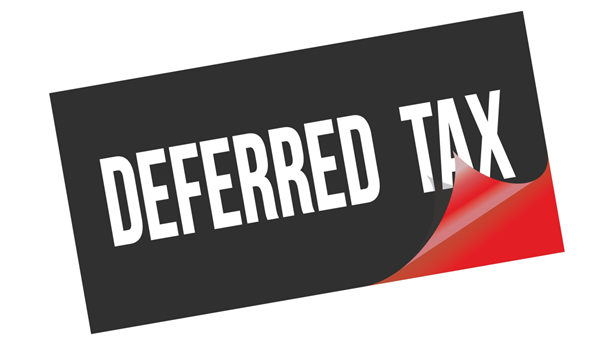What is a qualified annuity?
A qualified annuity is a tax-free retirement savings plan that the Internal Revenue Service has approved for use inside a Qualified Retirement Plan. Individuals pay taxes on this investment after receiving distributions, and it is usually generated through an employer.
Unlike a qualified annuity, unqualified annuities are bought with post-tax money. Qualified annuities are usually bought from IRA or 401K. These annuities also receive contributions from an investor's gross earning.
Summary
- Qualified annuities can be defined as a retirement savings plan that can be simply bought with tax-free money.
- There are, namely, six different types of qualified annuities.
- There are limitations in money contribution when it comes to qualified annuities.
Frequently Asked Questions (FAQ)
What are the different types of qualified annuity plans?
Several companies express qualified annuity plans as a retirement plan which the company usually sponsors to their employees. There are many such types of company-sponsored retirement plans available. They are:
Defined benefit plan
A defined benefit plan can be defined as a savings plan in which a company commits a certain amount of money to its employees based on their earning history. This amount is either paid to the employees in regular installments or at once as a huge chunk of money.
401 (k)
401 (k) is a rewarding strategy followed by companies. It serves both the purpose of rewarding as well as investing in a qualified annuity. This strategy is supported by the SECURE Act of 2019, making it simpler for companies to incorporate annuity within the 401 (k) plan.
403 (b)
The 403 (b) plan is significant as it helps organisations tax-exempt themselves. This plan is commonly used for public service employees such as teachers, bank managers, etc.

Image source: Copyright © 2021 Kalkine Media
- Individual Retirement Annuity (IRA)
An Individual Retirement Annuity IRA plan is a savings plan that allows pre-tax contributors to saving money annually up to a specific limit. The IRA incorporates plans like the SEP-IRA plan and SIMPLE IRA plan. Individuals who avail of the facilities of the IRA plan are allowed to contribute AU$ 5,500 per year or AU$ 6,500 for the senior citizen for people above 50.
- SARSEP Plan
SARSEP is also known as the simplified employee pension plan (SEP). It was established in the year 1997. The SARSEP incorporates a salary deduction system in which the employer is allowed to deduct a portion of the employee's salary to the Individual Retirement Annuity (IRA), which is set up under SEP-IRA.
- Tax Sheltered Annuity (TSA)
A Tax Sheltered Annuity (TSA) helps increase flexibility on the amount of contribution, which cannot be done with other plans. Teachers and healthcare workers mostly use this plan. With this plan, individuals can also pay their annuity payments at once for all those years when he/she has failed to pay.
What are the major contrasting features of the qualified and non-qualified annuity?
The major contrasting feature of a qualified and non-qualified annuity is that- qualified annuities are bought with pre-tax dollars. In contrast, non-qualified annuities are bought with post-tax dollars.
Some of the key points are stated below:
- There is always a limit on the income invested in a qualified annuity, whereas there is no such limit for non-qualified annuities. These limitations are dependent upon the investor's annual income during his earning period or if he had participated in other qualified retirement savings plans.
- Another major contrast is the tax-deference on the contribution feature of the qualified annuities. However, with non-qualified annuities, the investor must pay taxes on contributions as usual.
- Moreover, the income from a qualified bond is eligible for tax deductions. The tax is calculated on the entire income amount of the investor. Whereas with non-qualified annuities, the taxes are calculated only upon the profit and not the principal.
Are annuity and life insurance same?
It might appear to some investors that both annuity and life insurance serve the same purpose as they both are savings, and hence they are similar. Yet, the truth is that both annuities and life insurance serve the exact opposite purpose. Life insurances are meant for having cash backup even after the insurance holder's death, as they also offer accidental death benefits. The objective of life insurance kicks in when the policyholder passes away. On the other hand, the benefits of the savings plan can be enjoyed even if the annuity holder is alive.

Image source: © Designer491 | Megapixl.com
What are the benefits of investing in a qualified annuity?
A qualified annuity involves several factors such as tax status, retirement needs and overall financial goals of an individual. Therefore, choosing a qualified annuity plan should be done diligently.
It is important to understand the benefits and drawbacks of a qualifying annuity. So let us first know about the benefits of investing in a qualified annuity:
- One of the most significant qualities of a qualified annuity is that it allows tax-deferred contributions. This implies that qualified annuities allow paying premiums with the help of pre-tax dollars.

Image source: © Outchill | Megapixl.com
- Allowing an individual to pay for the premiums with pre-tax dollar signifies that the money used for paying qualifying annuities are not subjected to tax deductions. Therefore a higher annuity can be purchased with the pre-tax fund.
- Qualified annuity retirement plans also allow investors to increase their savings by contributing more funds without having to pay tax.
- The funds can be easily transferred across other investment instruments without having to pay tax.
- The qualified accounts offering survivorship benefits may not be completely undesirable by the RDM.
What are the drawbacks of a qualified annuity?
One of the major limitations of qualified annuity is that it does not allow cash withdrawals without charging a 10% penalty for individuals up to the age of 59.5. Moreover, a qualified annuity also does not allow acute withdrawals up to the age of 70.5. Some of the other major limitations of qualified annuity are stated below:
- There are some strict tax regulations when it comes to qualified annuities. The tax regulations are set in such a way that they are to be paid along with tax penalties that concerns all the other types of annuities.
- The tax rules involved with annuities are segregated from the contractual penalties analysed by finance companies for early withdrawal or termination of the contract.
 Please wait processing your request...
Please wait processing your request...